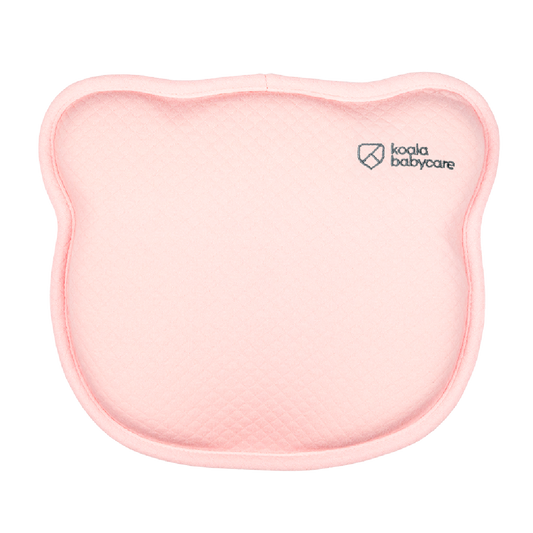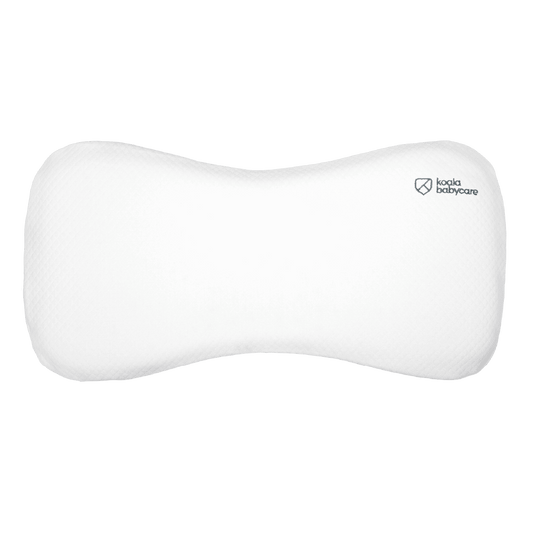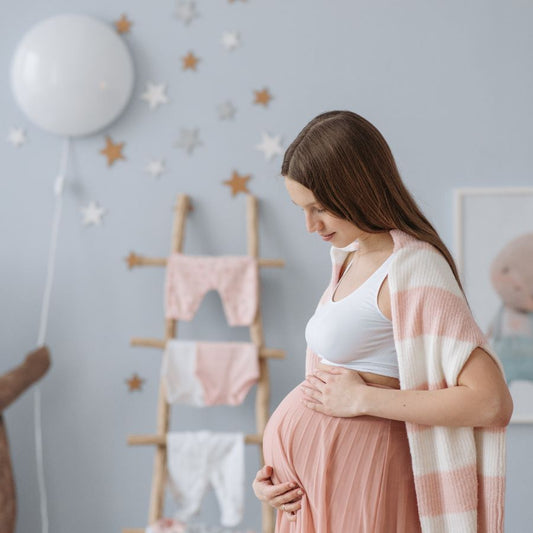Some babies may struggle to settle down to sleep, especially during the first few months of life. However, quite mysteriously, certain sounds seem to have a calming effect on a fussy infant: white noise is considered a sort of magic tool for newborns, it soothes them and helps them drift off to sleep peacefully.
But how does it work exactly, and why is it called white noise (or sound)? How can you generate it and where can it be found? Does it only offer positive effects, or should it be used with a certain degree of caution? Read on, for the answers to all your questions!
White noise for infants: what is it and how does it aid sleep
White noise is defined as "a particular type of noise characterised by the absence of periodicity in time and constant amplitude across the entire frequency spectrum" (source: Wikipedia). In simple terms, white noise is composed of all sound frequencies, that can be picked up by the human ear, with every frequency equally distributed.
Why is it called 'white noise'? Its name is derived by analogy to white light, which is the result of combining all visible colours. If white light is a non-colour, then we could also say that white noise is a non-sound.
This characteristic of white noise means that it becomes more of a base shield against external noises, as other sounds are masked and no longer bother us.
White noise to help babies sleep
You know those people who, when travelling by plane, drift off to sleep straight after take-off? In most cases this is due to the hum in the background, which is a typical example of white noise.
This is the exact same effect that white noise has on infants. Such sounds soothe babies, easing any pain they may be feeling, and help them fall asleep. Of course, it does not work its magic on every single baby, although - to the delight of mums and dads – it does work on many.
This phenomenon was first noticed in the NICU (Neonatal Intensive Care Units), where young babies were struggling to sleep due to the constant noise going on around them and probably also due to pain they may have been feeling.
A study carried out in London in 1990 - now outdated but still relevant - showed that 80% of babies who listened to white noise fell asleep within 5 minutes (compared to 25% of those who did not).
Several hypotheses have been made as to why this happens:
- As already mentioned, white noise absorbs and masks external sounds that could hinder an infant falling asleep
- Its frequency synchronises with brain waves during deep sleep
- White noise mimics sounds that your baby heard whilst inside the womb and which, being familiar, helps soothe them.
Whatever the reason, white noise is an excellent way to calm a fussy infant and help them drift off to sleep. So how can this type of noise be generated?
White noise: what is it and where to find it
Creating an environment with white noise for young babies is not a difficult or impossible task. On the contrary, It can easily be produced at home thanks to... commonly used household appliances!
Hairdryers are the most popular example of white noise, but you can also recreate white noise with a hoover, a kitchen extractor fan, a fan, or a TV channel without transmission. Some natural environmental sounds also come very close to white noise, such as raindrops, the flow of a stream or the crashing of waves.
If you want to try to get your newborn baby to sleep using white noise, we suggest you start with homemade sounds. If you notice that it works and you would prefer something more technological, you can then move on to:
- A white noise generator, which is a device similar to a small radio that you place near the baby's crib to generate calming white sounds
- White noise videos on YouTube, there are many types and duration lengths available (but, as we will see in a moment, it is better to avoid those which last all night). We suggest trying a white noise lullaby, which combines sweet lullaby music with gradual white sounds helping your infant drift off to sleep
- Websites where you can download Mp3s of white noises specifically for babies to have on hand at all times, such as Babysleepsite.com
- Apps for smartphones or tablets especially designed to soothe babies and aid their sleep, such as White Noise For Babies - which includes both natural and heartbeat sounds - or Sounds for Baby Sleep - which also works offline and has a timer.
Now we’ve understood which sounds to use, let's see how we can use white sounds for our infants safely without causing any unintended negative effects.
3 rules for using white noise to help infants sleep
While it’s true that white noise is useful to help babies relax and fall asleep, as with everything, it’s should always be used safely, wisely and in moderation. Here are 3 simple rules you can follow.
- Place the sound source far away from your baby.
- Keep the volume low, below 20 decibels, so as not to damage your baby’s hearing.
- Switch the white noise off as soon as your baby falls asleep: it doesn’t have to play constantly in the background for the entire duration of their sleep, otherwise it may interfere with the quality, causing wake-ups, as well as possible physical problems.
We also advise against developing a habit of using white noise at sleep time. Do try it with your baby, but only use it once in a while and not every time you are getting them to sleep. We suggest using it, for example, the first few nights your baby sleeps in the cot on their own, perhaps with one of our pillows.
In summary, white noise can help settle a fussy baby, soothing them as they drift off to sleep (it can also benefit us adults too!). It is, however, best not to misuse or overuse it and to ensure you follow the proper guidelines, to avoid turning what could be a good friend of yours into an enemy! With all this information now under your belt, we're sure that your baby will drift off to sleep peacefully ... and perhaps you will too!








